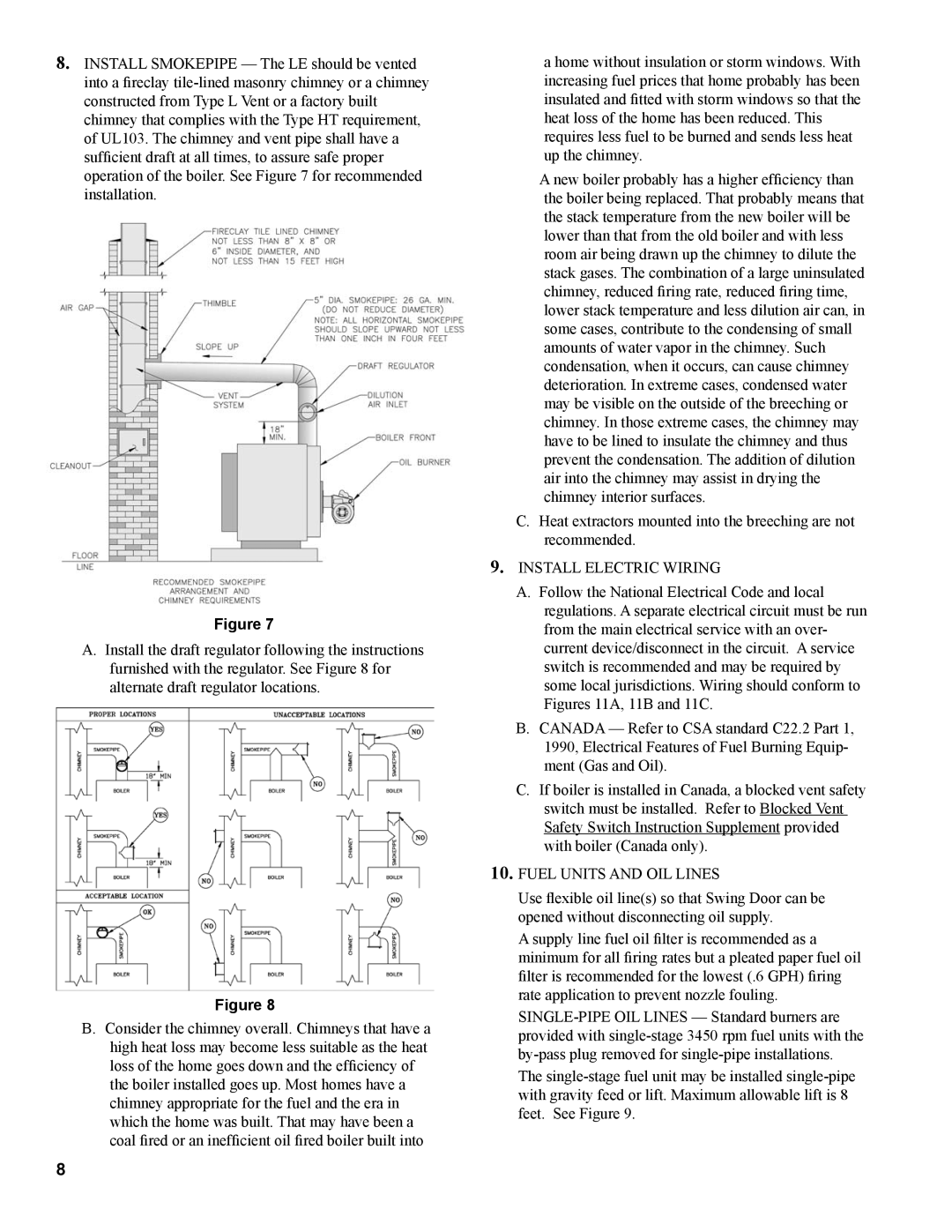L7248 specifications
The Burnham L7248 is a notable model in the realm of heating solutions, designed specifically for residential and commercial use. Renowned for its efficiency and reliability, the L7248 embodies innovative technology combined with user-friendly features, catering to diverse heating needs.One of the key features of the Burnham L7248 is its advanced heating technology. It employs a gas-fired system that provides both hot water and space heating. This dual-function capability ensures that homes remain warm and comfortable during the colder months while also supplying hot water for daily use. The integrated control system allows users to manage the heating effectively, ensuring maximum comfort with minimal energy expenditure.
The L7248 is designed with durability in mind. Constructed from high-quality materials, the boiler is built to withstand the rigors of regular use while maintaining peak performance. Its advanced heat exchanger design enhances efficiency by ensuring optimal heat transfer, which translates to lower energy costs and a reduced environmental footprint. Furthermore, the unit operates quietly, providing a peaceful environment without intrusive noise.
In terms of safety, the Burnham L7248 incorporates several features that protect both the system and the home. It is equipped with advanced safety controls that monitor pressure and temperature, preventing potential hazards. Additionally, the unit’s design allows for easy servicing and maintenance, ensuring that it remains in good working condition for many years.
Energy efficiency is another hallmark of the Burnham L7248. With an impressive AFUE (Annual Fuel Utilization Efficiency) rating, the model significantly reduces fuel consumption, helping homeowners save on energy bills while promoting sustainability. The boiler is also compatible with various smart home technologies, allowing users to integrate it into their existing systems for enhanced control and efficiency.
Overall, the Burnham L7248 stands out for its combination of innovative technology, safety features, and energy efficiency. Whether for residential or commercial applications, it provides a solid, reliable heating solution that meets the demands of modern living. With its user-focused design and robust performance characteristics, the Burnham L7248 is an excellent investment for those seeking dependable and efficient heating.

